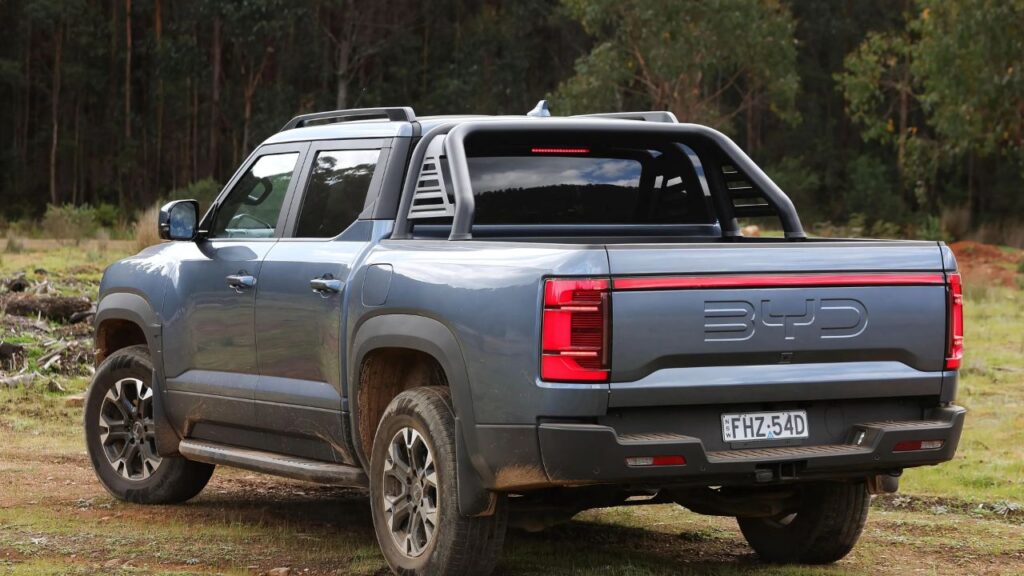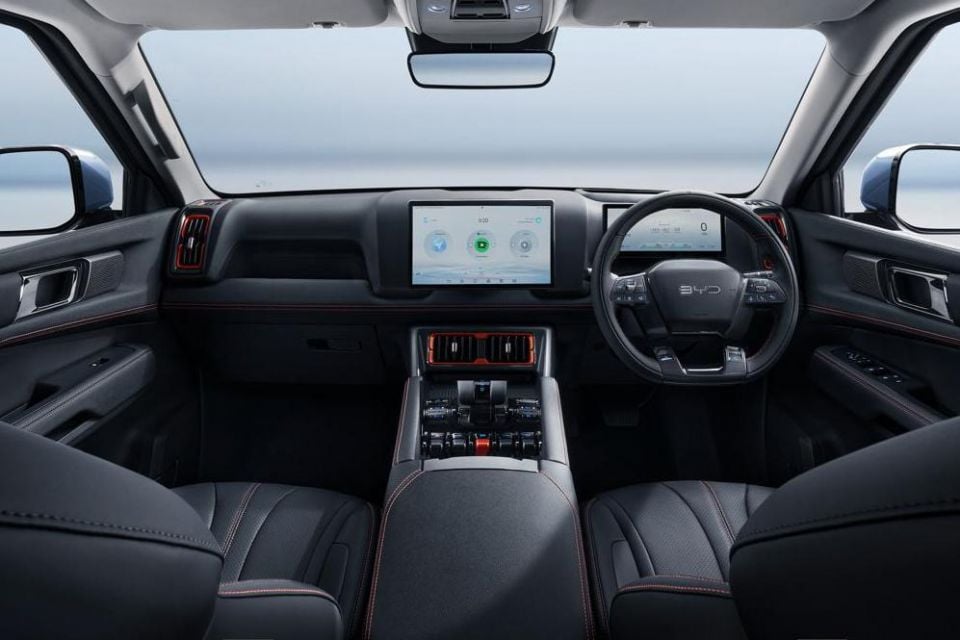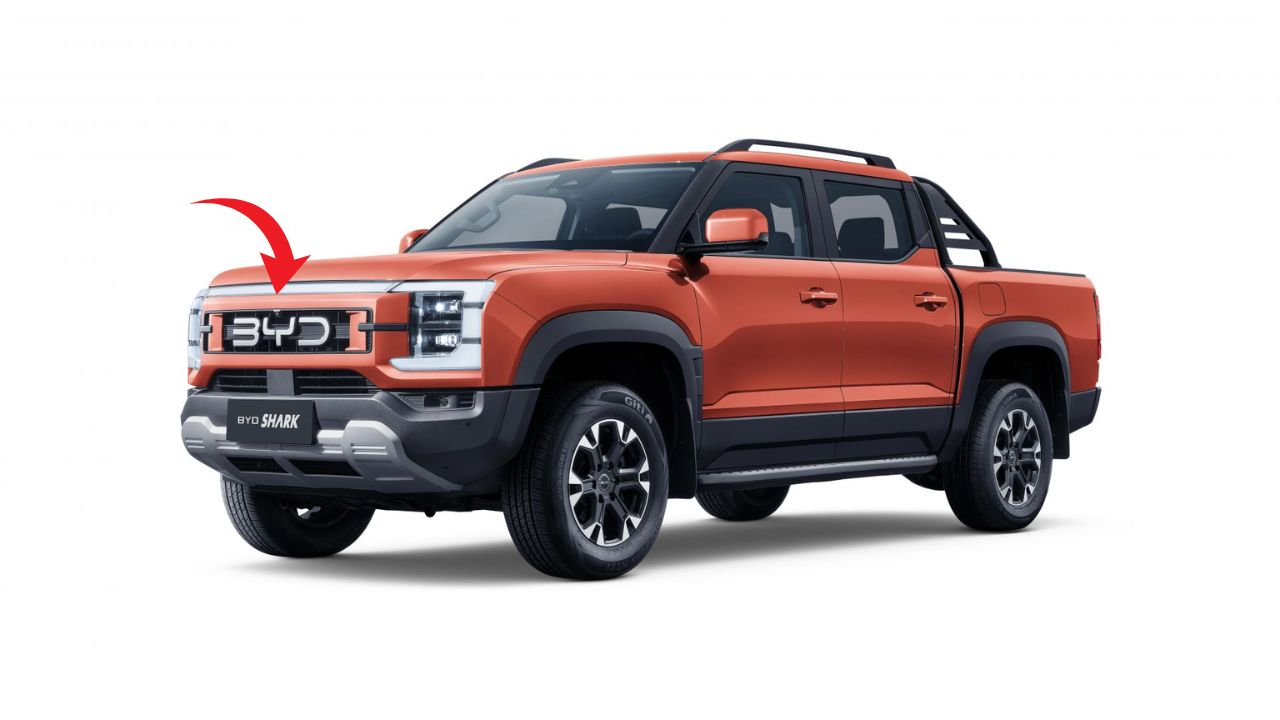The Australian ute market has long been dominated by traditional powerhouses like the Ford Ranger. However, a new challenger has emerged from China that’s turning heads and challenging established norms.
BYD’s Shark 6 PHEV represents more than just another vehicle launch. It’s a bold statement about the future of utility vehicles in Australia.

Market Disruption in the Australian Ute Segment
Ford Ranger has ruled Australian roads for years, capturing hearts with its rugged reliability. The Blue Oval’s dominance seemed unshakeable until now.
BYD brings fresh perspective to this traditional market segment. Their hybrid approach offers something completely different from conventional diesel engines.
Understanding the PHEV Advantage
Plug-in hybrid technology combines electric motors with traditional combustion engines seamlessly. This dual-power setup delivers impressive fuel economy without sacrificing performance.
The Shark 6 can run purely on electric power for daily commutes. When heavy-duty work calls, the petrol engine kicks in automatically.
Battery range extends up to 100 kilometers on electric power alone. Most Australian drivers cover this distance during typical workdays.
Towing Capacity Comparison
Ford Ranger boasts impressive towing specifications that have satisfied tradies for decades. The 3.5-tonne capacity handles most construction and recreational needs effectively.
BYD Shark 6 matches this capability with similar towing specifications. The hybrid system actually provides better low-end torque for pulling heavy loads.
Electric motors deliver instant torque from zero RPM. This characteristic gives hybrids an advantage when hauling trailers uphill.
Design Philosophy and Build Quality
Australian conditions demand robust construction that withstands harsh environments daily. Both vehicles approach this challenge with different design philosophies.
Ford emphasizes proven durability through decades of local testing. Their engineering reflects deep understanding of Australian road conditions.
Exterior Styling Approaches
The Shark 6 adopts modern, aerodynamic styling that reduces wind resistance significantly. Clean lines and LED lighting create a contemporary appearance.
Ford Ranger maintains its muscular, traditional ute aesthetic. The design language emphasizes strength and capability over efficiency.
Both approaches have merit depending on buyer preferences. Some customers prefer traditional styling while others embrace modern design.
Interior Comfort and Technology
BYD prioritizes technology integration with large touchscreen displays throughout the cabin. The interface feels more like a smartphone than traditional automotive systems.
Ford balances technology with physical controls that work reliably in dusty conditions. Their approach considers real-world usage patterns of trade professionals.
Seat comfort varies between manufacturers based on different ergonomic philosophies. Test driving becomes essential for making informed decisions.
Performance Metrics and Real-World Testing
Numbers on specification sheets only tell part of the story. Real-world performance reveals how vehicles actually behave under Australian conditions.
BYD’s hybrid system delivers smooth acceleration through electric motor assistance. The transition between power sources happens seamlessly during normal driving.
Fuel Economy Comparisons
Traditional diesel engines in Ford Rangers typically achieve 8-10 liters per 100 kilometers. This figure varies significantly based on driving conditions and load.
The Shark 6 PHEV claims consumption figures around 5-6 liters per 100 kilometers. These numbers assume regular charging and mixed driving patterns.
Real-world economy depends heavily on charging habits and usage patterns. Daily charging maximizes the hybrid system’s efficiency benefits.
Off-Road Capabilities
Ford Ranger’s reputation for off-road prowess stems from years of development. The four-wheel-drive system handles challenging terrain with confidence.
BYD engineers designed the Shark 6 with Australian conditions in mind. Ground clearance and approach angles match competitive requirements.
Electric motors provide precise torque control that benefits off-road traction. This advantage becomes apparent in challenging driving situations.
Pricing Strategy and Value Proposition
Australian vehicle pricing reflects various factors including import duties and local regulations. Both manufacturers position their products strategically within market segments.
Ford Ranger pricing starts around $35,000 for basic models. Premium variants with advanced features can exceed $70,000.
Total Cost of Ownership Analysis
Purchase price represents only the beginning of ownership costs. Fuel, maintenance, and depreciation significantly impact long-term expenses.
BYD’s hybrid technology reduces fuel costs substantially for high-mileage drivers. Electric driving eliminates fuel consumption entirely during city commutes.
Maintenance requirements differ between hybrid and conventional powertrains. Hybrid systems require specialized knowledge but fewer oil changes.
Government Incentives and Support
Australian federal and state governments offer various incentives for low-emission vehicles. These programs can significantly reduce effective purchase prices.
Electric vehicle charging infrastructure continues expanding across major cities. Rural areas still face limited charging options currently.
Tax benefits for business buyers vary by state and vehicle type. Professional advice becomes valuable for understanding applicable incentives.
Market Reception and Early Feedback
Initial Australian reviews of the BYD Shark 6 have been surprisingly positive. Automotive journalists praise the smooth hybrid operation and modern features.
Ford Ranger maintains strong brand loyalty among traditional customers. Many buyers stick with proven reliability over new technology.
Dealer Network and Service Support
BYD is rapidly expanding their Australian dealer network to support growing sales. Service training programs ensure technicians understand hybrid systems properly.
Ford’s established dealer network provides comprehensive coverage across the continent. Parts availability and service expertise remain strong advantages.
Remote area support becomes crucial for commercial operators. Both brands are addressing coverage gaps in rural regions.
Customer Satisfaction Trends
Early BYD owners report satisfaction with fuel economy and technology features. Some concerns emerge regarding long-term reliability and resale values.
Ford Ranger owners consistently rate their vehicles highly for durability. The proven track record provides confidence for business purchases.
Brand perception takes time to establish in conservative markets. BYD faces the challenge of building trust among skeptical buyers.
Technology Integration and Future-Proofing
Modern vehicles increasingly rely on sophisticated technology systems for operation. Both manufacturers approach this challenge with different strategies.
BYD emphasizes cutting-edge connectivity and over-the-air updates. Their systems can evolve and improve after purchase through software updates.
Charging Infrastructure Considerations
Home charging installation costs vary depending on electrical system requirements. Most installations range from $1,000 to $3,000 including equipment.
Workplace charging becomes increasingly common as employers support sustainability initiatives. Many companies install charging stations for employee use.
Public charging networks continue expanding but coverage remains uneven. Planning becomes necessary for long-distance travel with electric vehicles.
Battery Technology and Longevity
Modern lithium-ion batteries demonstrate impressive longevity under normal usage conditions. Most manufacturers warranty batteries for eight years or 160,000 kilometers.
Battery replacement costs continue declining as technology improves. Current replacement costs range from $10,000 to $15,000 for complete systems.
Recycling programs ensure responsible disposal of end-of-life batteries. Manufacturers increasingly take responsibility for complete product lifecycles.
Environmental Impact and Sustainability
Environmental considerations increasingly influence purchasing decisions across all vehicle segments. Both manufacturers address these concerns differently.
BYD’s hybrid technology significantly reduces emissions during typical driving cycles. Electric operation produces zero local emissions in urban areas.
Lifecycle Environmental Analysis
Manufacturing impact varies between conventional and hybrid vehicles significantly. Hybrid production requires more energy due to complex systems.
Operational emissions depend heavily on electricity generation sources in different regions. Clean electricity maximizes environmental benefits of hybrid technology.
End-of-life recycling becomes increasingly important as hybrid adoption grows. Responsible disposal programs protect environmental interests long-term.
Carbon Footprint Comparisons
Daily commuting represents the largest opportunity for emission reductions. Electric driving eliminates tailpipe emissions completely during short trips.
Long-distance driving still requires combustion engines in most hybrid systems. Overall emissions reduction depends on individual usage patterns.
Corporate fleets can achieve significant emission reductions through hybrid adoption. Many companies set ambitious sustainability targets requiring fleet modernization.
Future Market Predictions

The Australian ute market faces significant transformation over the next decade. Traditional manufacturers must adapt or risk losing market share.
Electric and hybrid technology adoption rates continue accelerating globally. Australian consumers gradually embrace these technologies despite initial skepticism.
Competitive Response Strategies
Ford and other traditional manufacturers are developing electrified versions of popular models. The next-generation Ranger will likely offer hybrid options.
Market competition benefits consumers through improved technology and competitive pricing. Multiple manufacturers pursuing similar goals accelerates development.
Government regulations increasingly favor low-emission vehicles through various policy mechanisms. Manufacturers must adapt to changing regulatory environments.
Frequently Asked Questions
Q: What is the real-world fuel consumption of BYD Shark 6 PHEV compared to Ford Ranger?
The BYD Shark 6 PHEV typically achieves 5-6L/100km with regular charging, while Ford Ranger averages 8-10L/100km under similar conditions.
Q: How does towing capacity compare between these two vehicles?
Both vehicles offer similar towing capacities around 3.5 tonnes, though the BYD’s electric motors provide better low-end torque for hill climbing.
Q: What are the main advantages of choosing BYD Shark 6 over Ford Ranger?
Lower fuel costs, modern technology features, reduced emissions, and government incentives are the primary advantages of the hybrid system.

